After lots of slow-mo videos of various solids we thought were certainly not deforming, we realized they all were to some point, even before it possibly broke! We think that every material deforms, and that the amount of force needed to deform an object might be different. So...
We returned to our DQB to realize that there we questions about force, and each class suggested finding a way to measure force (like with a suitcase scale)!
We returned to our DQB to realize that there we questions about force, and each class suggested finding a way to measure force (like with a suitcase scale)!
So Mrs. Brinza turned to the science storage closet again, and there were these "suitcase" like scales called spring scales. We agreed to use them to begin measuring the force needed to deform everyday materials like wood and pasta!
Using class data from an investigation we did together, we are seeing that there is some elasticity in every material, and there is a point at which the elasticity is compromised and the material doesn't return to where it started. From there, the breaking point is inevitable, and the material is bound to break with a certain amount of force in a collision!
So thinking back to all the related phenomena we came up with that launched our unit, we are thinking that all the forces in various collisions make a difference in how much something deforms and whether or not a material gets damaged. We are also seeing that every time there's a collision, two things are coming in contact. So is one always doing the pushing or pulling? What's the other thing doing if it's getting deformed?
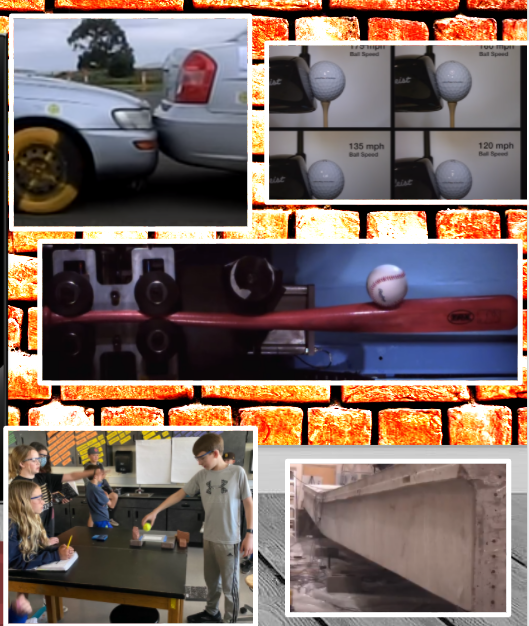
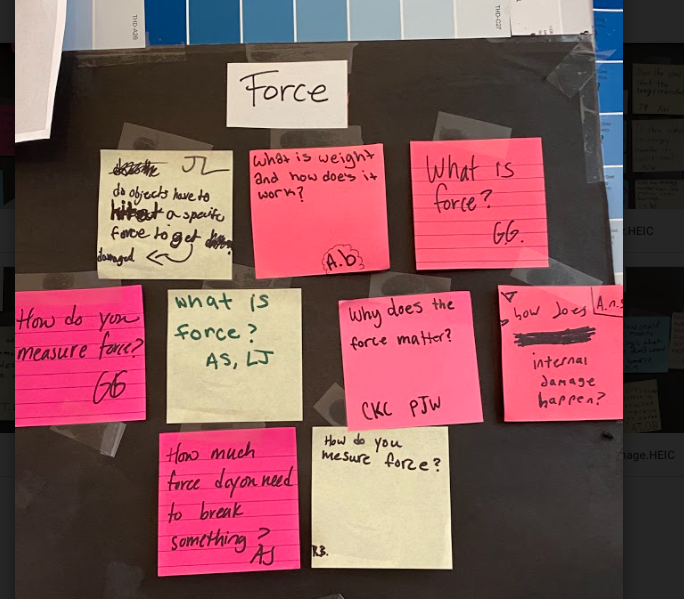
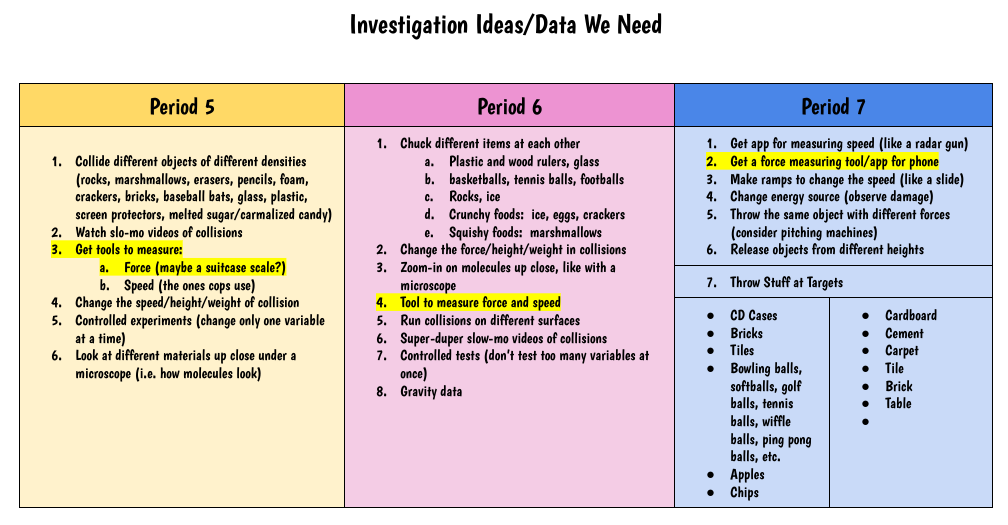
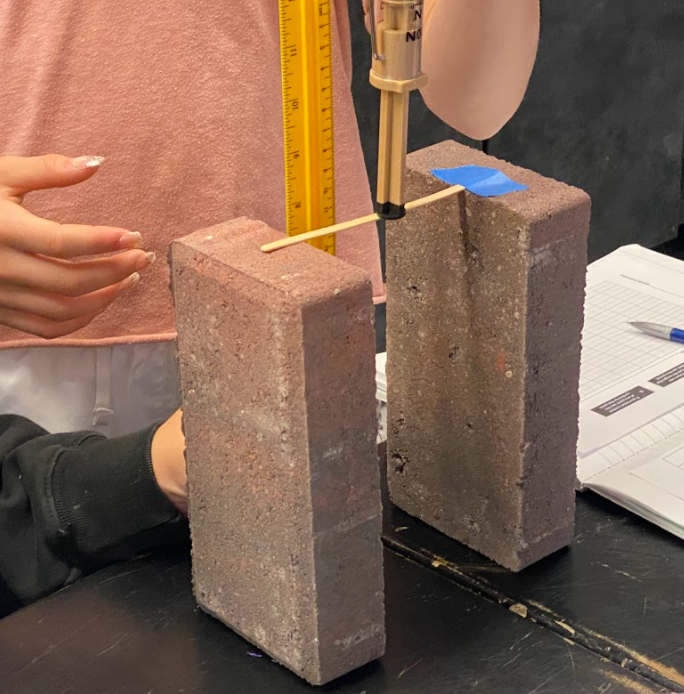
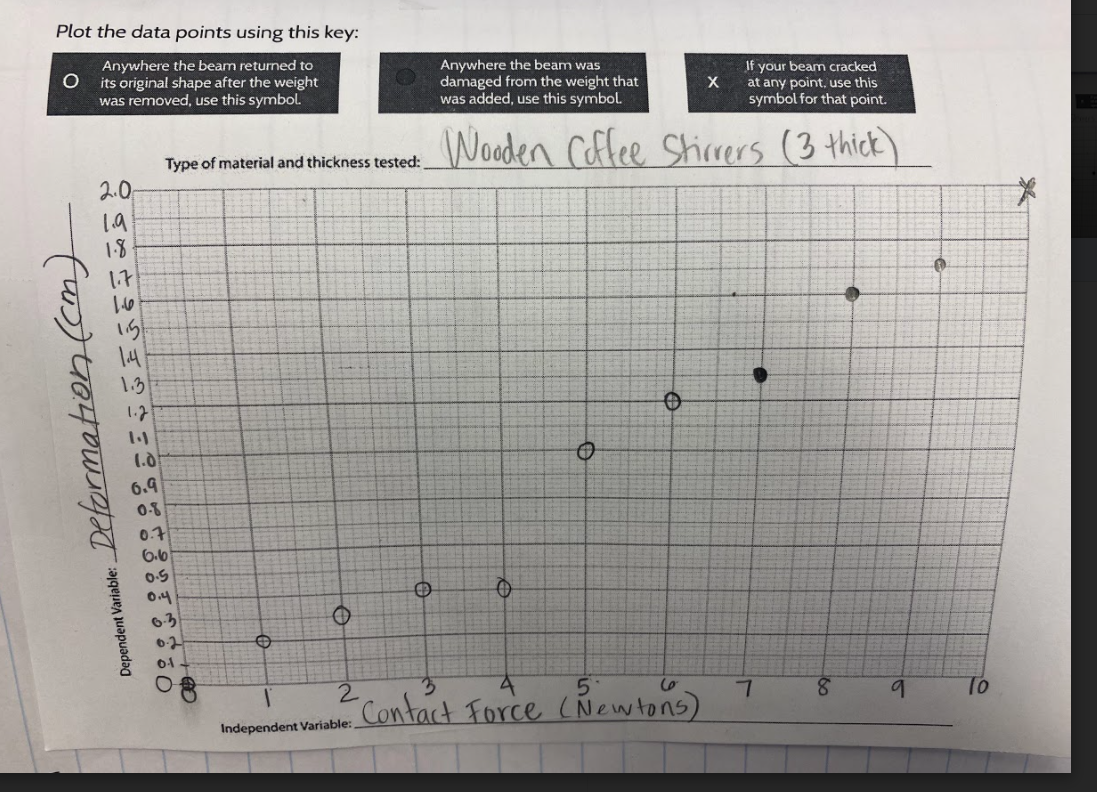
 RSS Feed
RSS Feed